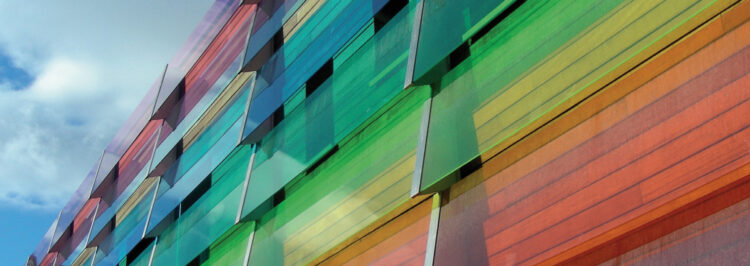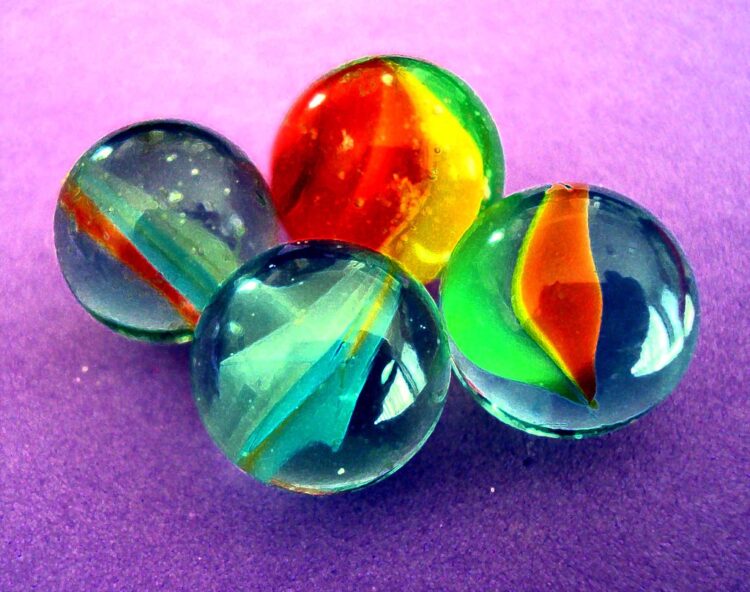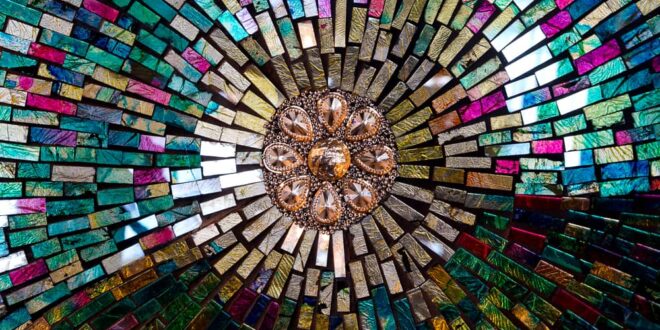Colored glass is not something uncommon. In fact, we see it almost everywhere, whether it is beer bottles, skyscraper windows, churches and in many other places. We are so used to seeing it, nobody wonders how it is actually made. Are you not interested in the idea of how we get such colors inside of the glass? How does a glazier manage to create a window that you can clearly see through and a bottle that has a bright green color?
You probably have tons of unanswered questions about this subject, but do not worry, we will get into answering all of them.
To obtain different colors, a glazier has to add in different materials that influence the shaping process of the glass. So, adding something such as copper or gold can really make a piece of glass look much more attractive than when it is clear. It is definitely one of the most beautiful parts of this transparent solid.
It has been proven time and time again just how much influence the difference in the color of a bottle can have on people. Let’s say, you see a regular clear bottle of orange juice, and you don’t feel any increased desire of buying or drinking it. But, find the same orange juice inside of a red or an orange bottle and you will be interested in buying this product in just a few seconds.
History
In modern times, we are able to create glass in any color we want. Whether you want your glasses at home to be red, purple or if you want your windows to be green-tinted, it is easily achievable. But, go back a few centuries and this wasn’t the case.
Ancient civilizations such as Egypt or Mesopotamia have left hundreds of relics made from colored glass, but we believe that the variation in the shade of these relics was not done on purpose. People in ancient times had no idea how to obtain a different tint.
It is obvious that the discovery of tinted glass was completely random and because of an accident. People soon realized that mixing materials while quenching creates different results. Several centuries later, Musa Jabir ibn Hayyan was an expert on creating differently tinted windows and had his own journal with different recipes. Many historians and chemists refer to him as the Father of Chemistry, and he definitely deserves that title.
After the discovery of this idea of creating a piece of class in a different hue, people quickly became obsessed. Trying to create tiny bottles and ornaments in different tint. Soon after Christian churches started asking for such windows which is why it is so common to see stained windows inside of churches. It became a tradition that lasts to this day.
However, glaziers of that time had a problem maintaining the color they have created which was quite a problem. With a bit of research, glaziers soon found out that adding gold could maintain the red parts of the glass a bit longer, which gave them the idea to play around with different materials such as uranium, lead, copper, and others.
Color Palette

Today, glaziers have mastered the color palette when it comes to creating bottles, windows or whatever it is glass-related. If you want to achieve the brightest possible yellow and if you want it to last as long as possible then you will need to add cadmium. For something red, you would require gold. The gold keeps the red from every fading away. When trying to achieve a violet or blue hue, a glazier adds in cobalt oxide which helps to strengthen the contrast. Manganese dioxide is used to achieve a strong purple hue. To get a bright green, you need chromic oxide. If you are looking for any of these materials or minerals to achieve the perfect hue, check out mineralmilling.com.
There are several other different hues that you can find on the palette, but we don’t really need to get in details about the materials used during the manufacturing process.
Manufacture process

To give you an idea of how glaziers manage to make colored glass, we will explain to you the manufacturing process.
In today’s world, glaziers first need a combination of a lot of sand and cullet. Cullet is basically broken down the glass that can be reused or recycles. These two materials are then put into a furnace that can reach more than 1000 degrees Celsius. If you want the product to be as high-quality and clear as possible, you will definitely need to ensure that the furnace is hot enough.
Once the sand and cullet reach their melting point when exposed to such high temperatures they start getting intertwined and combined. In such a hot furnace, the sand and cullet quickly turn into this glowing and red liquid that might remind you of lava.
Forming shapes like a bottle or a jar is quite easy these days because it is done by blowing. Since the hot liquid mix of sand and cullet is so easily manipulated, with a blow of hot air you can create a bubble. With a bit of shaping this bubble can become a bottle, a jar or something similar.
To obtain a clean and polished finish, the liquid is exposed to nitrogen while under heavy pressure.
When it comes to windows, most manufacturers like to use calcium oxide and alumina to make it a bit more water-resistant. You do not want water coming through your windows when it rains, right?
Once the product’s final form has been obtained and it has gone through most chemical additions, it goes through a process called annealing. Annealing is the process of slowly cooling the hot objects after they have obtained the required form. Through annealing, we achieve a much more durable and reliable product.
Depending on what the final product is going to be, the glass may go through a few other processes such as lamination, surface treatment or coating to improve its durability, strength or to give it color.
 Hi Boox Popular Magazine 2024
Hi Boox Popular Magazine 2024



